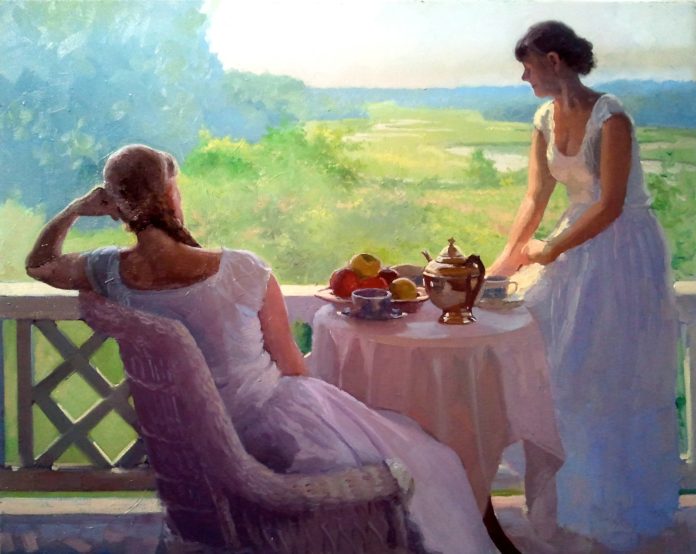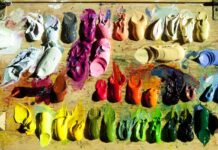Art inspiration > How can you finally “arrive” at your destination of being a real artist? Here are some steps you should take.
Journey Into the Heart of Art
BY DENNIS PERRIN
When I began painting, like nearly all art students, I looked outwardly for art inspiration and for technique. I really thought that a painting was a thing to be made, or built, or executed, and so all I had to do was know what I wanted to paint and then how to do it.
My teacher, M. Dell Weller, had been trained at the Art Students’ League back in the ’50s and had a wealth of technique. I learned to pay close attention to value, to use color in wonderful yet conventional ways, and how to draw on my canvas in order to create a roadmap for my paintings. It was a wonderful way to embark on my painting career and it gave me a solid technical foundation for the many paintings I would come to paint over the next thirty years.
After school I became ravenous for information about painting and began earnestly studying how others accomplished their paintings. I became enamored of the American movement, especially those in and around the Boston School and the Ten American Painters. I perused books, visited museums, copied paintings and details, and voraciously consumed writings and thoughts on techniques on painting.
Through books like The Art Spirit by Robert Henri, notes on painting by artists like Frank W. Benson, Edmund Tarbell, and John Singer Sargent, as well as the nearly scriptural text, Oil Painting Techniques and Materials by Harold Speed, I developed a foundational method that allowed me to create paintings in a way that I could relax and enjoy the process of painting.
The struggle I had become accustomed to in “wrestling a painting to the ground” was gone. I entered a new phase of painting in which the number of successes far outweighed the failures, allowing me to meet the growing demand for my work in galleries across the country.
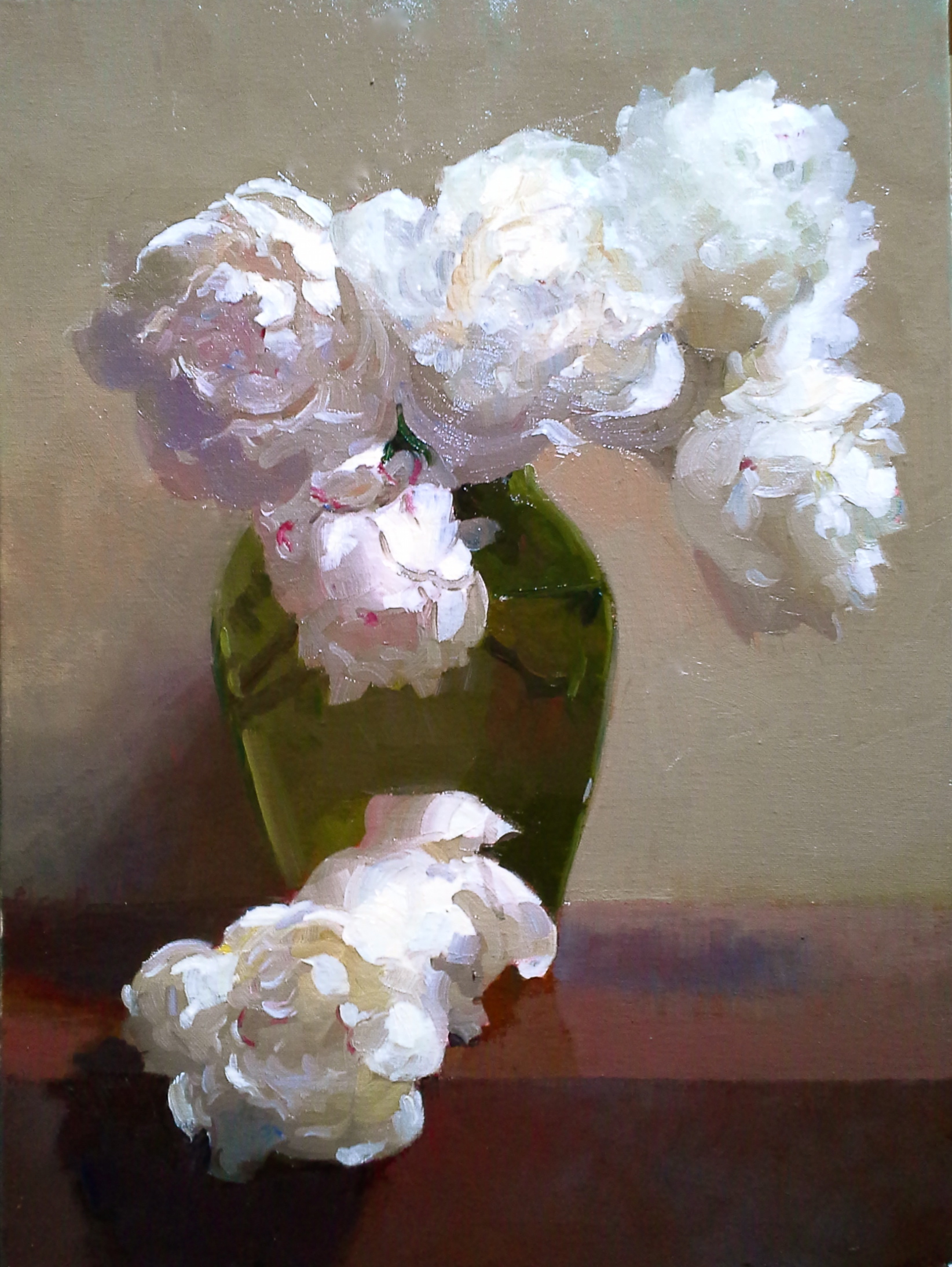
Simply stated, my method is characterized by an initial drawing, somewhat detailed, in which I work out composition and value relationships, always drawn directly on the canvas with thin, “wash-like” paint, using a brush. The canvas is then simplified into a few (usually three to five) large shapes that are defined primarily by value and then color. The drawing, of course, is lost.
Once the canvas is covered with a layer of paint, I then seek to refine and tweak the individual shapes that exist independently of the objects or elements that comprise the subject, being careful not to violate the original character of the shape. Eventually edges are defined by painted “transitional tones,” and the final strokes are those of deep value accents and high-keyed highlights. Voila! The painting has emerged.
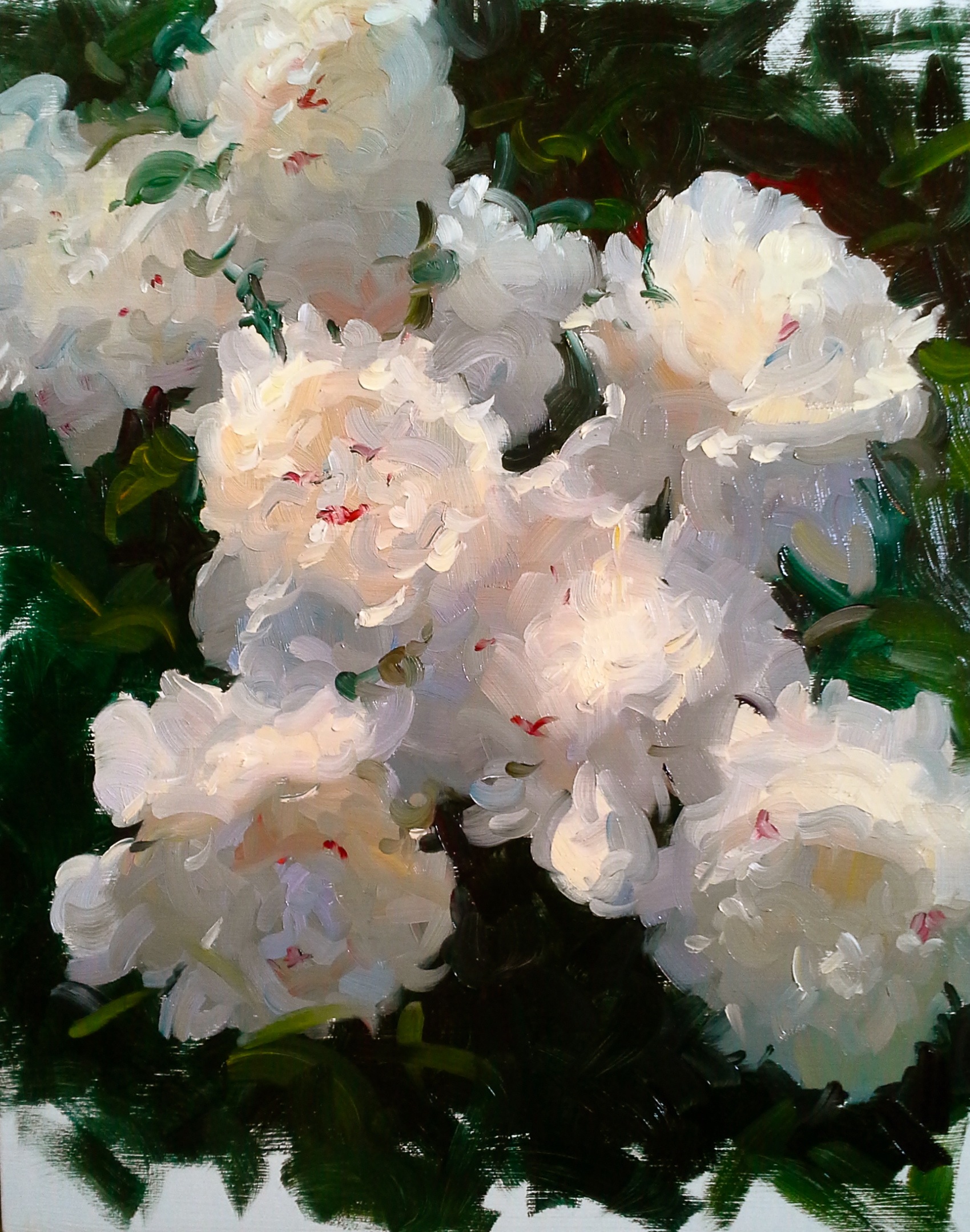
It’s this method that I’ve brought to my teaching now for nearly two decades and with great success. Most students eventually understand how simplification and the concentration on values nearly always lead to a successful painting. But I have never been satisfied to settle for the way things are, so I have evolved.
Through my own personal spiritual exploration, especially my study of the teachings of Abraham as translated and expressed by Esther Hicks, I have come to realize that a painting, just like any other experience in our lives, is a creation, something that first takes place as a thought or an idea or an image that then leads to a manifestation—if allowed. And it was this realization that set me on my current emphasis that creating a painting is accomplished from the inside out.
I encourage my students to first practice visualizing the finished painting in their mind’s eye before they even touch a brush or paint. In fact, we often begin our classes with a guided meditation that encourages them to “see” the finished painting. I then invite them to step back slightly and see that the painting is mounted on their easel, just below is their palette covered in swirls of paint, with brushes and paraphernalia nearby.
I also invite them to “see” their own hand and to realize that they are the artist that created this painting. Through this process, the student enters the role of being the creator of the work and sets the stage for them to now “allow” the painting to come into being in real, physical terms. This simple but powerful shift takes the painting process to a whole new level!
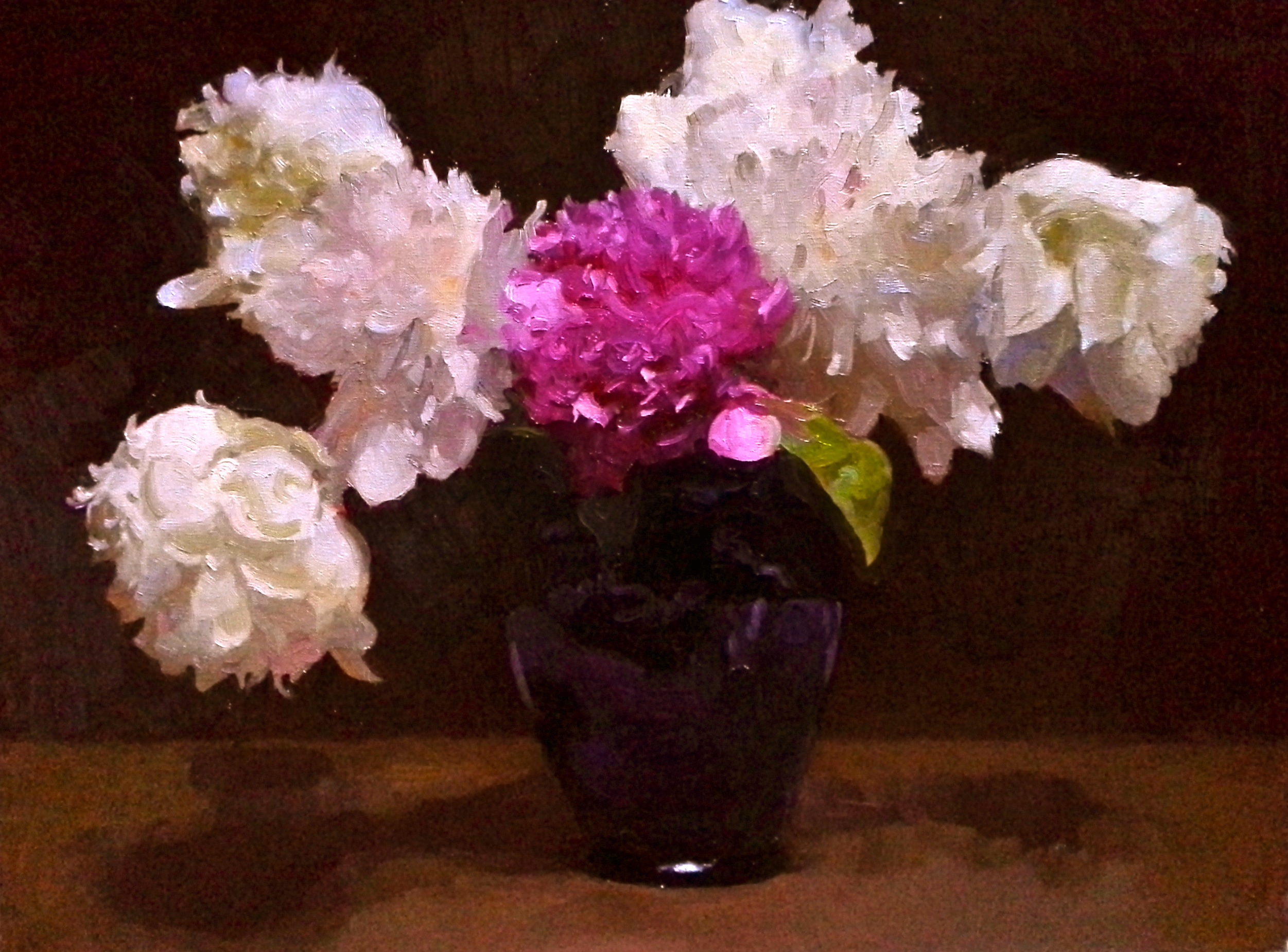
Art Inspiration and Process
What I find most interesting is the constant doubting and second guessing the students engage in as they navigate their way through a painting. Invariably there is, first, a reluctance to “lose” the drawing on their way to “gaining” the painting. I just say that’s the Zen of the process and there’s no other way to get from here to there.
Then, once the value shapes are identified and painted in, there is constant anxiety over how the painting looks at any intermediary stage. It’s as if they started out on a journey, began to doubt the directions they had, and either got lost or decided to return to the starting point. I sensed that it was in the lack of the vision they had for the painting that created this confusion. So I used this analogy, borrowed from Abraham-Hicks, to create a better understanding:
Say you live in Phoenix and decide to make a drive to San Diego. After consulting a map or GPS, you’ve determined the route you need to take to arrive at your destination. You strike out on the journey, knowing that some reasonable amount of time will need to pass before you arrive in San Diego.
You may have consulted some travel magazines to get an idea of what to expect when you get there and you may have even developed a picture of what that looks like or how you will feel when you arrive. Then, you relax and enjoy the drive, knowing full well that if you stay on course you will arrive. You may even take a wrong exit here or there, but with confidence and your navigational tools, you find your way back to the route and eventually your destination.
The analogy may be obvious, but the practice of navigating through a painting seems to be quite the challenge for many who set out on this journey. My experience tells me that most people are not enjoying the journey. And even more importantly, I’ve seen that how they feel about painting at all is entirely wrapped up in how they feel about the “destination.” If they are able to produce a successful conclusion to the journey—a painting that pleases them or others, depending on their preference—then they feel good about what they’ve done, even if the process of painting was tortuous.
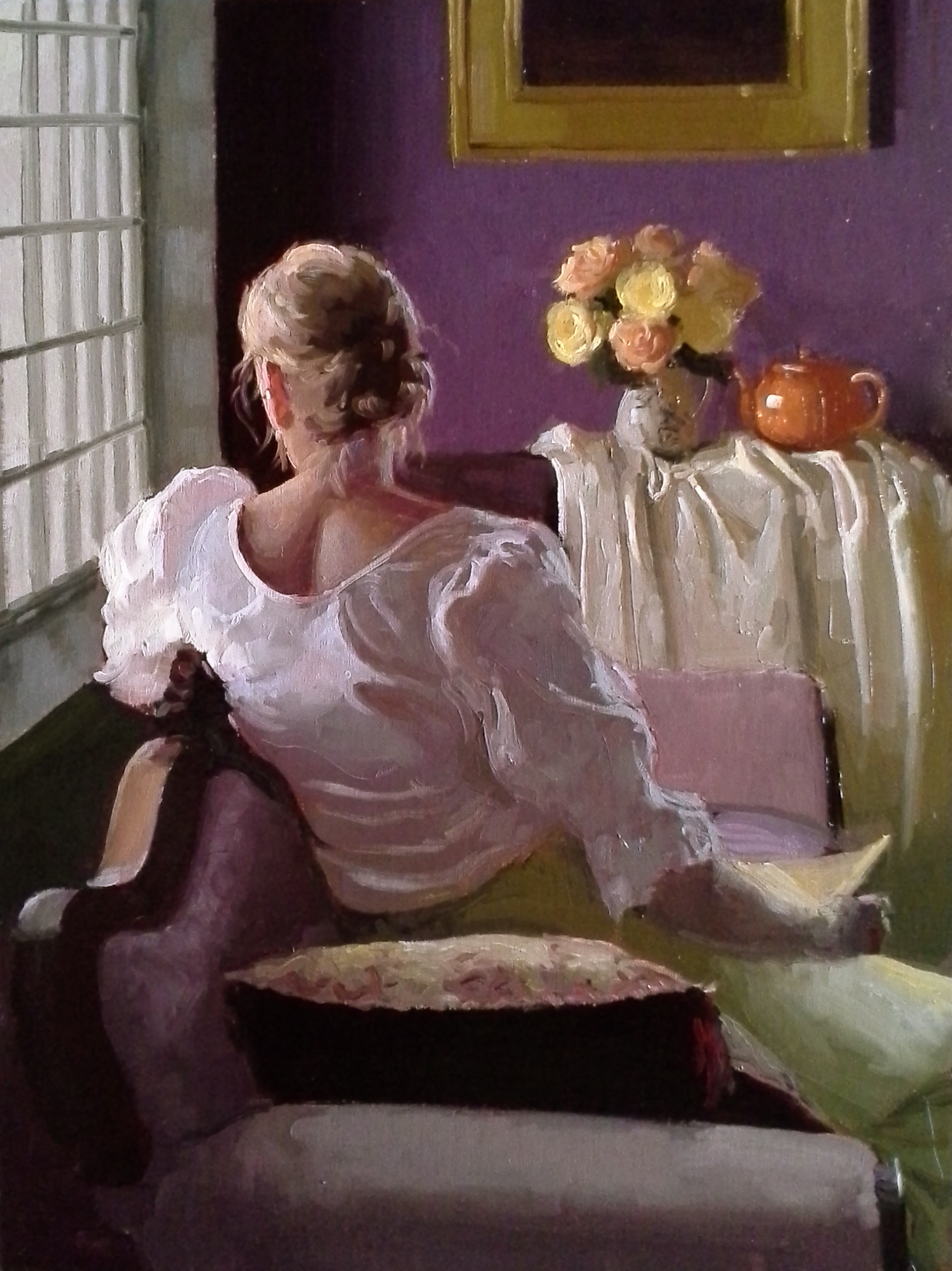
My suggestion is this: do your best to study your subject to the point of inspiration. Determine what it is you want to say or convey about the subject—the light, the mood, the feeling, the atmosphere—and let that shape your vision of the final work. Then relax, allow the process to carry you through, at all times simply enjoying the journey.
Before you know it, you will have “arrived” at your destination. Your vision of the painting will have emerged from the blank canvas that you started with, and the message you wished to convey to your viewer will have been the result of your vision and the feeling you experienced.
This is the proper order of things: First the vision, then the feeling, then the journey, and the painting is simply the inevitable result.
Now that was simple, wasn’t it?
Learn more about Dennis at: www.dennisperrinfineart.com
Realism Today covers artists and products we think you’ll love. Linked products are independently selected and linked to for your convenience. If you buy something using a link on this page, Streamline Publishing may receive a small share of that sale.
Find more art inspiration at RealismToday.com.
Visit EricRhoads.com (Publisher of Realism Today) to learn about opportunities for artists and art collectors, including:
- Art retreats
- International art trips
- Conventions for art inspiration, networking, and education
- Art workshops (in person and online)
- And more!


